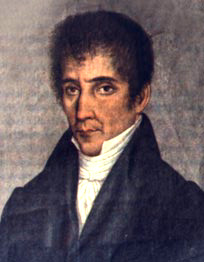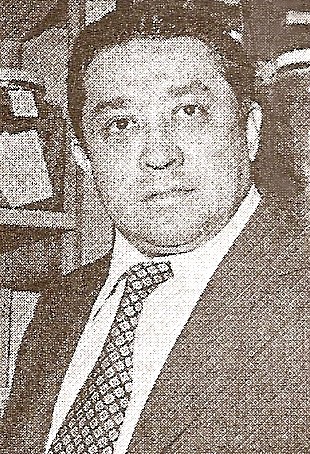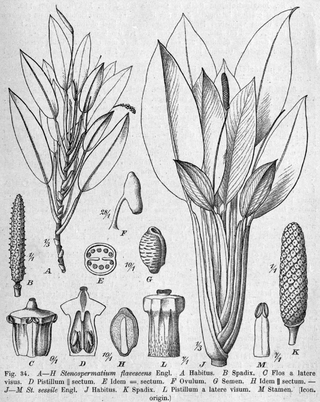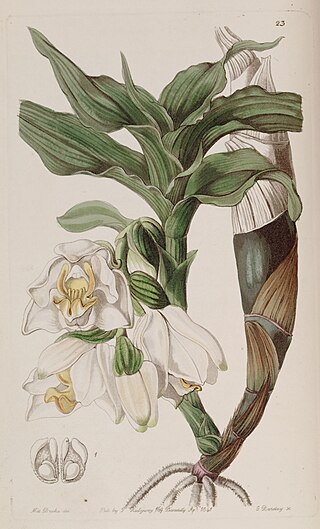Related Research Articles

Guatemala City, officially New Guatemala of Assumption, known locally as Guate, is the capital and largest city of Guatemala, and the most populous urban area in Central America. The city is located in the south-central part of the country, nestled in a mountain valley called Valle de la Ermita. The city is the capital of the Municipality of Guatemala and of the Guatemala Department.

Quetzaltenango is both the seat of the namesake Department and municipality, in Guatemala.

José Cecilio Díaz del Valle was a philosopher, politician, lawyer, and journalist and one of the most important figures in Central America during the transition from colonial government to independence, displaying a wide-ranging expertise in public administration management.

Stanhopea is a genus of the orchid family (Orchidaceae) from Central and South America. The abbreviation used in horticultural trade is Stan. The genus is named for the 4th Earl of Stanhope (1781-1855), president of the Medico-Botanical Society of London (1829-1837). It comprises 55 species and 5 natural hybrids. These epiphytic, but occasionally terrestrial orchids can be found in damp forests from Mexico to Trinidad to NW Argentina. Their ovate pseudobulbs carry from the top one long, plicate, elliptic leaf.

Santa Cruz del Quiché is a city, with a population of 78,279, in Guatemala. It serves as the capital of the El Quiché department and the municipal seat of Santa Cruz del Quiché municipality. The city is located at 15.03°N 91.15°W, at an elevation of 2,021 m above sea level. It has an airport, Quiché Airport, located just south of the city.

General Fernando Romeo Lucas García was the 37th President of Guatemala from July 1, 1978 to March 23, 1982. He was elected as Institutional Democratic Party candidate. Elections for his presidency were fraud-ridden. During Lucas García's regime, tensions between the radical left and the government increased. The military started to murder political opponents while counterinsurgency measures further terrorized populations of poor civilians.

Panzós is a town with a population of 22,068 and a municipality in the Guatemalan department of Alta Verapaz.

San Cristóbal Verapaz is a town, with a population of 20,961, and a municipality in the Guatemalan department of Alta Verapaz. It is located approximately 29 km from Cobán, the capital of Alta Verapaz and about 210 km from Guatemala City. San Cristóbal belongs to the Pokimchi' linguistic area. Its main income source is the «Cobán» shoe factory, which specializes in industrial rubber boots, which are sold both locally and internationally.

Francisco Mago Leccia (“Mago”) was born in Tumeremo, Bolívar State, Venezuela on May 21, 1931 and died in Puerto La Cruz, Anzoátegui State, Venezuela on February 27, 2004. Mago was a distinguished Venezuelan ichthyologist who specialized in electric fish of the rivers and lagoons of South America, particularly of Venezuela. His education was Docent in Biology and Chemistry graduate from the “Instituto Pedagógico de Caracas”,, Master of Sciences from the University of Miami, Florida, U.S.A., Doctor in Sciences from Universidad Central de Venezuela. His Doctoral Thesis was entitled: “Los peces Gymnotiformes de Venezuela: un estudio preliminar para la revisión del grupo en la América del Sur”.

Stenospermation is a genus of plant in family Araceae native to South America and Central America.

Chysis bractescens is a species of orchid. It is native to Oaxaca, Tabasco, Guatemala, Belize, El Salvador, Honduras, and Nicaragua.
Juan Pedro Laporte Molina was a prominent Guatemalan archaeologist best known for his work on the ancient Maya civilization. He studied in the United States at the University of Arizona, in which he enrolled at the age of nineteen. After just one year he transferred to the Escuela Nacional de Antropología e Historia in Mexico. He continued his studies at the Universidad Autónoma de México from 1972 to 1976, from which he graduated with a doctorate in archaeology. He worked as a research assistant at the Museo Nacional de Antropología in Mexico City from 1967 through to 1976. Laporte worked at various archaeological sites while he was in Mexico, including Tlatilco, Chichen Itza and Dainzú. He first began working as an archaeologist in Guatemala in the 1970s, and was the head of the School of History of the Universidad de San Carlos de Guatemala (USAC) for more than thirty years. He first entered USAC in 1977, soon after returning from Mexico. In 1974 he carried out investigations at the Maya archaeological site of Uaxactun in the northern Petén Department of Guatemala. Between 1974 and 1976 he carried out archaeological investigations in Antigua Guatemala, which has since been designated as a UNESCO World Heritage Site, and around Lake Izabal.
The Sierra de Lema is an upland mountain range area with tepuis, located in Bolívar state of southeastern Venezuela.
Dichromanthus yucundaa is a terrestrial species of orchid. It is endemic to the State of Oaxaca in southern Mexico.

Magnolia silvioi is an endemic species of Antioquia department. Common names include: guanábano de monte, fruta de molinillo, guanabanillo.

Luz Méndez de la Vega was a Guatemalan feminist writer, journalist, poet, academic and actress. As an academic, she concentrated on researching and rescuing the work of colonial Guatemalan women writers. She was the winner of Guatemala's highest prize for literature, Miguel Ángel Asturias National Literature Prize, and the Chilean Pablo Neruda Medal, among many other literary awards throughout her career.
The Temple of Minerva was a Greek style temple erected in Guatemala City by the government of president Manuel Estrada Cabrera in 1901 to celebrate the Fiestas Minervalias. Soon, the main cities in the rest of Guatemala built similar structures as well.
El Mirador Azul was the only self-proclaimed surrealist group in Puerto Rico. The group included student artists and poets under the guidance of Spanish surrealist Eugenio F. Granell during his tenure at the University of Puerto Rico in Rio Piedras.

The biodiversity of Colombia is the variety of indigenous organisms in the country with the second-highest biodiversity in the world. As of 2021, around 63,000 species are registered in Colombia, of which 14% are endemic. The country occupies worldwide the first position in number of orchids, birds and butterflies, second position in plants, amphibians and fresh water fish, third place in species of palm trees and reptiles and globally holds the sixth position in biodiversity of mammals.

Dora Emilia Mora de Retana was a noted Costa Rican botanist, known primarily for her work with orchids. She compiled an extensive catalogue of the variations of the flower found in Costa Rica which became the seminal reference work on the family Orchidaceae in the country for over a decade. There are at least five species of orchids named in her honor and in 2011, a plaque bearing her name was installed at the Lankester Botanical Garden to recognize her contributions to its development.
References
- 1 2 "Margaret Dix: "No me doy por vencida"" (in Spanish). Prensa Libre. Retrieved 1 June 2015.
- ↑ "Centro de Estudios Amientales y de Bioversidad". Universidad del Valle de Guatemala. Retrieved 1 June 2015.
- 1 2 "Dra. Margaret Dix: Curriculum Vitae" (in Spanish). UVG, Guatemala. Archived from the original on 2 June 2015. Retrieved 1 June 2015.
- ↑ Anna-Claire Bevan (30 March 2014). "Guatemala's treasured Lake Atitlán is dying". The Tico Times. Retrieved 2 June 2015.
- ↑ "Dix, Margaret A. (1939-)". plants.jstor.org. Retrieved 2021-09-23.
{{cite web}}: CS1 maint: url-status (link) - ↑ "News From MO: 2000". Missouri Botanical Garden. Retrieved 2 June 2015.
- ↑ International Plant Names Index. M.A.Dix.